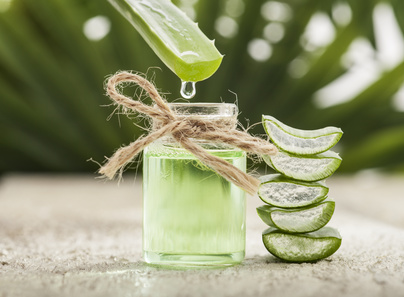 A man looks at his hair loss and it’s like a punch to the kidneys. But when a woman goes through noticeable hair loss it can be much more severe.
A man looks at his hair loss and it’s like a punch to the kidneys. But when a woman goes through noticeable hair loss it can be much more severe.
Unlike men, whom often lose their strands relatively quickly and in focussed areas, female hair loss tends to be gradual. It’s most often seen as an overall thinning of density, throughout the scalp, and most often affects women over 50. That should at least soften the blow – until it doesn’t fit this watered-down pattern.
The American Academy of Dermatology estimates that 30 million American women are affected by androgenetic alopecia, also called female pattern hair loss. And this constitutes much, if not most, of the hair loss that women experience.
Women lose hair for other reasons, of course. Diet, lifestyle, medical and even skin conditions can all factor in and contribute to loss of hair. In such cases, hair loss may be reduced and even reversed with changes to the non-genetic factors responsible.
There’s much you can do to prevent, reduce or at least manage female hair loss. Pull up a chair and discover what’s in your power, what’s not, and how to ease the burden of female hair loss.
Three Cycles of Hair Growth
You may find it helpful to think of hair growth as a garden. Hair grows in cycles, and like any flower or vegetable, it requires nutrients for health and vitality. Factors that interfere with hair growth include illness, some medications, infection and chemicals.
Roughly 90% of the hair on your scalp is in the anagen, or growth phase. This lasts between two and eight years. The catagen, which lasts between two and three weeks, is the transitional phase during which hair follicles shrink. And the telogen is the resting cycle, in which your hair lays dormant for up to four months.
In most people, hair grows about six inches a year. And they tend to shed between 50 and 100 strands on a daily basis. It’s not uncommon to lose up to 250 hairs on days you shampoo, but don’t use this as an excuse not to wash your hair; these will eventually fall out regardless.
Women may first notice hair loss with clumps of hair left on their pillow, or strands that remain in their comb. You may also notice hair loss as a widening part, or more visibility of the scalp when hair is pulled back.
Non-Genetic Hair Loss
Rapid hair loss in women is often caused by non-genetic factors. This is good news, because in this scenario, it’s often reversible.
 To diagnose hair loss, your doctor should perform a blood test to determine if the thyroid gland or an autoimmune disease is responsible. Extreme stress, physical trauma (including surgery), dramatic weight loss and high levels of vitamin A can all trigger hair loss. In some cases, hair loss occurs up to six months after the event.
To diagnose hair loss, your doctor should perform a blood test to determine if the thyroid gland or an autoimmune disease is responsible. Extreme stress, physical trauma (including surgery), dramatic weight loss and high levels of vitamin A can all trigger hair loss. In some cases, hair loss occurs up to six months after the event.
Some hair styles – especially braids – can cause loss of hair in women. Perming and hair curlers are no friends of women with fine hair either, as the combination of heat and chemicals add unnecessary strain to your hair and its appearance.
In addition, many medications can cause female hair loss.
If your hair loss is not hereditary, congratulations. You may have the power to reverse it with changes to your grooming habits or treatment of the medical condition responsible. Speak to your doctor for help with the latter. Add some of the hair-friendly foods to your diet that we’ll discuss in this article to address any nutrient deficiencies. And give your scalp time to recuperate from surgery or injury. More than likely it will.
When Hair Loss is Genetic
Women with genetic hair loss tend to have varying sizes of hair follicles. Unlike men, whom often recede at the hair line and crown of the head, women most often experience broad thinning in the top third to half of of the scalp.
While their thinning hair is usually less severe than men experience, researchers believe the same culprit is responsible for genetic hair loss in both sexes. The cause is most likely a potent form of testosterone, called dihydrotestosterone (DHT), that binds to the receptors in follicles and shrinks them. Women have less testosterone than men, which explains why female hair loss is less noticeable.
That may be little consolation to women with severe hair loss, however. And in women with more noticeable hair loss, and at a younger age, it’s likely the culprit is sensitivity to DHT. Such women may have higher levels of androgens (male sex hormones), lower female hormones to counter the androgens, or they’re simply sensitive to testosterone in general.
Hair Loss Treatment Medication
As a general rule, treat hair loss as quickly as possible. Thinning hair means the follicles are shrinking, but they’re still alive. When hair is gone, the follicles are dead, and baldness occurs. This is less of an issue for women, obviously, but it’s still essential to treat hereditary hair loss quickly if you’d like to preserve what you have.
Rogaine is, at present, the only FDA-approved hair loss medication for women. Also called minoxidil, this is a topical treatment that works best to preserve frontal hair loss. Primarily tested in men under 40, this is perhaps the best known hair loss medication. Limit use to the FDA’s recommended 2% concentration and don’t exceed it without a nod from your doctor.
 Propecia (finasteride) is another option. Unlike Rogaine, Propecia does address the high levels of DHT that cause genetic hair loss. Some men experience a cringe-worthy series of side effects, however, including erectile dysfunction and impotence that lingers even on discontinued use.
Propecia (finasteride) is another option. Unlike Rogaine, Propecia does address the high levels of DHT that cause genetic hair loss. Some men experience a cringe-worthy series of side effects, however, including erectile dysfunction and impotence that lingers even on discontinued use.
There are no reports of sexual side effects of women, using Propecia, however, and the drug might be a safer option for women than it is for men, with a notable exception. Under no circumstances should pregnant women use Propecia, as the drug is proven to cause birth defects in the male fetus.
You might also consider speaking with your doctor about androgen receptor inhibitors, including Aldactone or Tagemet. Estrogen and progesterone creams and pills are another option to reduce hair loss, though should be pursued only with doctor approval. Care should also be taken to avoid high-androgen index pills, as they can make hair loss worse, not better.
Hair Transplants Becoming Popular With Women
While previous limitations made this an unpractical option for most women, new developments in the industry make hair transplants an increasingly attractive option for women with hair loss.
Hair transplants relocate existing hair from an area not predisposed to genetic hair loss. In men, this is usually the rear of the head, just above the neck. In this procedure, a surgical team removes a strip of skin from this donor area from which the team painstakingly inserts tiny grafts fitted with hair within tiny incisions made throughout the scalp. This is the recipient area.
Though hair transplants of previous years weren’t suited for the more diffuse thinning that women often experience, that’s quickly changing. New methods allow for more hair to be placed within each graft, and the procedure can now be done quicker, with less concern for tissue damage. In some clinics, 30% of clients are women.
Bear in mind that hair transplants don’t restore the previous hair volume of yester-year. This procedure, also called hair restoration, simply relocates hair from an area unaffected by genetic hair loss to spots where it’s required. And as with all cosmetic procedures, costs are a factor. Expect to pay at least $4000 for a treatment, with multiple sessions sometimes required.
Under no circumstances should pregnant women use Propecia, as the drug is proven to cause birth defects in the male fetus.
But hair transplants are now an option for many women with female pattern hair loss. And as the technology continues to evolve, the results you may enjoy with hair restoration will only get better.
Eat Hair-Friendly Foods
More good news for women with hair loss. If you’re losing strands from a deficiency in nutrients, you may get at least some hair growth with the foods you consume. Even if your hair loss is genetic, as it is in most women, you can still make the hair you have retain its health and vitality. You really can have great, thinner hair. Start with your diet.
Healthy hair requires a well-balanced nutritious diet. Avoid processed, fat-filled snack foods the next time you go shopping. The best foods for hair are in the outer aisles of the supermarket. You’re looking for iron, vitamins B12 and C, zinc and copper.
Foods for hair growth include:
Salmon – If there’s one beauty food that shines above others, it might be wild salmon. Bursting with Omega-3 fatty acids and an excellent source of hair-friendly protein, salmon’s got enough iron and vitamin B12 to make even the thinnest hair look like the Amazon rainforest.
Dark Green Vegetables – Your parents told you to eat these as a kid. But they might not have known that spinach, broccoli and Swiss chard, among many others, are packed with a hair-friendly wallop of vitamins A and C to produce your hair’s natural conditioner, called sebum. Dark greens are also high in much-appreciated iron and calcium.
Beans – Yes, beans. Legumes don’t get the respect they deserve in the beauty department, which is too bad, because there’s enough iron, zinc and biotin in beans to encourage a forest of healthy growth on your scalp. Aim for at least three cups of beans or lentils each week.
Nuts – Another under-rated source of nutrition for great hair, brazil nuts in particular are high in selenium, which is vital to health of your scalp. Walnuts, too, are great for your hair, as they’re an excellent source of alpha-linolenic acid and zinc.
Poultry – High-quality protein at its hair-boosting finest, chicken and turkey can reduce brittle hair and may even reduce those greys and whites that creep up with age.

Eggs – Scrambled, over easy or scraped off the ceiling. You can prepare eggs any way you like and they still retain their protein, biotin and vitamin B12. Don’t fear the yolk, either – that’s where the goodness lies.
For more information, head over to WebMD’s list of the ten best foods for your hair.
How to Blend Hair Loss Into Your Style
Women with hair loss and fine-textured hair can minimize the effect it has on their confidence with styling tips to blend into their style and emphasize the hair that they have.
Genetic hair loss in men and women is not indicative of unhealthy hair. On the contrary, it often means the hair is healthy and is simply following a genetic schedule. Inconvenient? Yes – but you might conceal much of it with semi-permanent or permanent hair coloring to give it the appearance of more volume. Have this done professionally, and within three shades of your natural color.
While you’re at it, shop around for a good volumizing product. Avoid products with paraffin, which is beeswax, as it can accumulate at the base of the hair and cause it to break off. Try mousse instead, blow dry the root area and apply tension with a brush. Add with a light finishing spray to maintain the hold.
The best foods for hair are in the outer aisles of the supermarket. You’re looking for iron, vitamins B12 and C, zinc and copper.
On a related note, shampoo your hair only when it’s dirty. Fine hair tends to require more frequent care as it gets dirty quicker, so take care when shampooing and use a volume-building conditioner.
As we’ve seen, heat, harsh chemicals and styles that place traction on the scalp all contribute to hair loss. Women sporting braids are at an even higher risk. In that light, avoid excessive perming and iron curlers. Try a permanent wave to give the appearance of additional volume. Make this a gentle wave, with fewer chemicals than a longer lasting style, and have this done by a professional who knows how to minimize breakage.
That’s not an exhaustive list, but it gives you an idea of the options available to make thin or otherwise less than a full head of hair part of your look.
Relax, most women experience less hair loss than men, and it tends to occur later in life. And when it doesn’t, medical treatments continue to improve. Hair transplants for women get better by the year, and you’d be amazed at how far a hair-friendly diet will go with the hair styling tips we’ve reviewed.
There’s always hope.




